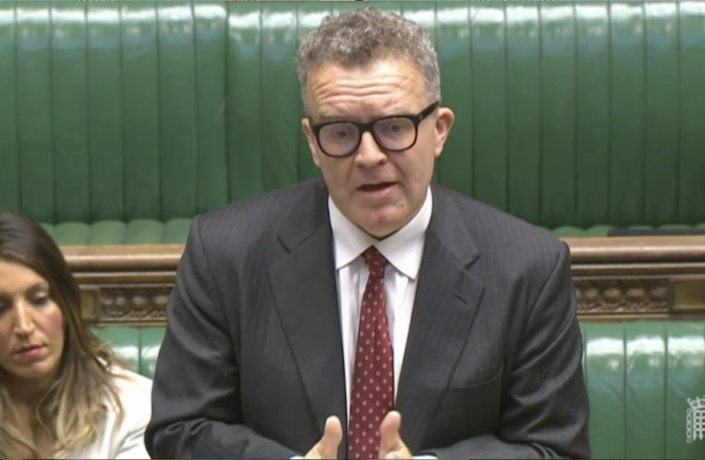 News
News


Nesta’s digital social innovation project looks at how tech tackles some of society’s biggest challenges. In his latest focus, Matt Stokes explains how digital innovation is helping renew and protect democracies Europe-wide.
 The crisis in liberal democracy across the world shows no signs of abating. From democratic backsliding in countries led by strongman rule to ever-increasing mistrust in political processes, our leaders and systems – particularly at the national and international level – have so far failed to tackle the challenges we face.
The crisis in liberal democracy across the world shows no signs of abating. From democratic backsliding in countries led by strongman rule to ever-increasing mistrust in political processes, our leaders and systems – particularly at the national and international level – have so far failed to tackle the challenges we face.
These worrying trends have been a wake-up call for the global civic tech community, who have long sought to use digital technologies to improve the state of democracy, tackle corruption and facilitate communication and collaboration between governments and citizens. After a decade of activity, many are asking: was this all in vain?
The political events of the past three years have, rightly, led the civic tech community to a moment of self-reflection. But rather than despairing, people are using them as new impetus for change.
Over the past months, Nesta and Warsaw-based ePaństwo Foundation have been exploring the current state of civic tech as part of the EU-funded DSI4EU project. Our latest research looks at the people, projects and organisations using technology to improve democracies and found a community as vibrant and determined as ever.
In Slovenia, Transparency International is using open data to visualise municipal budget spending, while the Romanian Academic Society’s “Clean Romania” maps all corruption cases handled by the national Anticorruption Directorate. Meanwhile, tools like Alavateli (facilitating freedom of information requests) and Pombola (for parliamentary monitoring) are now being used in tens of countries worldwide.
Alongside individual projects, the civic tech support ecosystem continues to grow; the Code for All network, for example, now counts 29 global members committed to mutual learning and collaboration, while conferences, meetups, accelerators, research fellowships and communities of practice are growing in number.
We’ve made significant progress in mapping the civic tech landscape, with several databases (including our own at DSI4EU) providing information on the state of play. (The next challenge is to understand how we can make these databases more interoperable and accessible.)
As is the norm across fields of innovation, civic technologists have sometimes struggled to really understand the impact of their work and to learn from failure. Again, there’s rapid progress in this area, with organisations like the Knight Foundation and Civic Hall putting a lot of thought into how we can rigorously measure the impact of civic tech.
One interesting recent development is the Civic Tech Field Guide’s “graveyard” database of now-defunct projects, intended to encourage innovators to learn from the past, and to honestly reflect on what works and what doesn’t. Such initiatives will only grow more important as the most successful tools scale their impact further and funders demand more bang for their buck.
Perhaps most promisingly of all, the breadth and depth of collaboration between civic technologists and governments continues to grow. There will always be a need for civic tech initiatives outside of government (particularly those aiming to hold the powerful to account), but great impact can also be achieved by working within existing structures.
Digital platforms for engaging citizens in idea generation, decision-making and budgeting are now being used by governments internationally; Consul’s open-source tools, for example, are now being used in 100 institutions in 33 countries. Fellowship or “startup in residence” models, where technologists work directly with government for specific periods of time, have also been pioneered in the US, Canada, the Netherlands, Pakistan and Australia, and hold significant promise for embedding new ways of working in government (and opening up technologists’ eyes to the realities of government).
Going forward, we need to explore further how civic tech can more easily access public procurement channels.
The civic tech field is still young, and we have a long way to go. Engaging citizens, particularly the disengaged and disadvantaged, remains difficult. Funding for scaling is thin and sustainable business models are in short supply. There’s still far too much duplication, wasted effort and fragmentation. And, of course, above this hangs the p-word: politics.
Changes in government and policy can be make-or-break for civic tech projects, particularly those which rely on governmental goodwill, procurement or policy.
All stakeholders have a role to play in tackling these challenges: funders must commit to maintenance and core costs, collaborate more with each other and support projects to measure their impact; policymakers must maintain and grow their support; and civic technologists must join up their efforts, learn from each other and commit to impact measurement.
The current state of politics, economics and technology does not paint a rosy picture for our democracies. The opportunity for civic tech remains vast, and the maturing community is as determined as ever. With the right support for innovators and the wider ecosystem, we can build upon these gains and ultimately build a brighter democratic future for all.
Matt Stokes is a senior researcher in government innovation at Nesta
Matt Stokes: people innovate to put planet first
Matt Stokes: innovating for integration
Matt Stokes: mapping digital social innovation